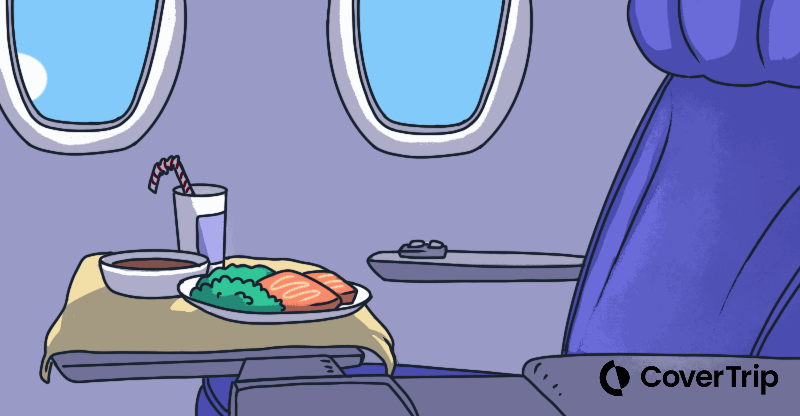How to travel safely with food allergies
19 June 2025
Studies have shown that families with a food-allergic child tend to limit the number of vacations they take. They may also avoid certain types of transportation, and many are reluctant to travel outside the country for fear of not being able to access medical care.
It’s not just children with allergies that are a concern for travelers, either. An increasing number of adults are developing food allergies:
- According to 2024 data from Nature Medicine, food allergy affects up to 8% of children and 10% of adults globally.
- A November 2023 study presented at the American College of Allergy, Asthma and Immunology indicated that adult-onset allergies are becoming increasingly common, with many adults reporting they developed food allergies after age 18.
While most adults don’t ‘grow out of’ their allergies, children often can. Even more critical are the key findings about adult-onset food allergies:
- Can develop with foods eaten safely for years
- Often present differently from childhood allergies
- Symptoms are often more severe in adults
- Women appear to be at a higher risk than men
- Potential triggers include changes in environmental factors, previous viral infections, and shifts in the gut microbiome (which can be triggered with trying new foods in new places)
If you are traveling with a food allergy, a food-allergic person, or someone with previous viral infections (a possible precursor to developing food allergies) and want to be prepared if an unexpected food allergic reaction occurs, read on.

Before You Go: Planning for Food Allergies When You Travel
Preparation is the best start to opening up travel opportunities for yourself or someone you love with a food allergy.
Pro tip: If you aren’t already working with a trusted specialist or immunologist, the American Academy of Allergy, Asthma & Immunology (AAAAI.org) can help you find a specialist close to home who can help you prepare for your trip.
Here are some helpful steps to consider as you prepare for any trip:
- Research local cuisine so you know what dishes to avoid. For example, if the food allergy is related to peanuts, be aware that Indonesian gado-gado, a popular salad dish, traditionally comes with peanut sauce dressing.
- Talk with your doctor and get a prescription for additional epinephrine auto-injectors. Carry at least two on your trip.
- Ask your doctor for a letter explaining the medical necessity and store that with your epinephrine.
- Know who to call in the area you visit if you have an emergency.
- Keep your allergist’s phone number on hand and know how to call them from another country.
- If you’re traveling abroad, consider carrying a card that explains your allergy in the local language. You can show this to restaurant servers or, if possible, the chef, to avoid an allergic reaction.
- Also, call your travel carriers or check their websites to learn their food allergy policies. Some airlines will offer alternative snacks, but they can’t guarantee an allergy-free flight because they cannot control the actions of other passengers.
Packing Tips to Avoid Allergic Reactions
Here are the items to pack in your carry-on or backpack:
- Safe snacks – in case the only alternatives will trigger a reaction.
- Epinephrine injectors – put two in your carry-on and another one or two in your checked luggage. This way, if your luggage goes one way and you go another, you still have the life-saving medicine.
- Sanitizing wipes – to wipe down the tray tables, etc., in case food crumbs have been left behind by other travelers.
The TSA allows epinephrine auto-injectors (like EpiPens) on planes, as they are medically necessary devices. Here are the key rules and guidelines.
Carry-on bags: Epinephrine auto-injectors are allowed and actually recommended to be packed in your carry-on rather than checked baggage. This ensures you have immediate access if needed during the flight.
Documentation: While not strictly required, it’s recommended to:
- Carry your prescription label or documentation
- Have a letter from your healthcare provider explaining the medical necessity
- Keep the auto-injector in its original packaging with prescription label if possible
Security screening: When going through security, you should:
- Declare your auto-injector to TSA agents
- Keep it separate from other liquids (it’s exempt from the 3-1-1 liquid rule)
- Be prepared for additional screening if requested
Quantity limits: There are no specific limits on the number of auto-injectors you can bring, but it is recommended that you bring a reasonable amount for the duration of your trip.
Additional tips:
- Do not put the epinephrine injectors in the overhead bin in case you need to reach it quickly
- Inform flight attendants and your fellow travelers of your allergy and where you keep your auto-injector
- Check that your auto-injectors haven’t expired before traveling
Buy Travel Medical Insurance for Food Allergies
Travel medical insurance can be crucial when traveling abroad with food allergies, as many domestic health insurance plans offer limited or no coverage outside the US.
Look for a policy that explicitly covers emergency medical evacuation and pre-existing conditions like food allergies. This coverage could be essential if you need emergency treatment or transportation to a better-equipped facility.
Pro tip: Do not skip the coverage for pre-existing medical conditions! Read how to get it and what it covers.
Some insurers offer plans that explicitly cover food allergy emergencies, and the travel medical insurance provider can often help you locate appropriate medical facilities in your destination country.
Safe Dining Strategies for Your Trips
Dining out with food allergies requires extra vigilance, especially when traveling. Here are proven strategies to help you eat safely while still enjoying local cuisine:
- Research and Plan Ahead
- Use apps like AllergyEats or Spokin to find allergy-friendly restaurants, or have a translation app like Google Translate to help you communicate with local staff
- Look up menus online and contact restaurants in advance about their allergy protocols
- Book early reservations when kitchens are less busy and staff can give more attention to special requests
- Communication is Key
- Dine during off-peak hours when staff can give your requests more attention
- Show your allergy card to both the server and the chef if possible
- Be wary of cross-contamination concerns (shared cooking oils, grills, or utensils)
- If there’s any uncertainty about ingredients or preparation, don’t hesitate to choose another option
- Smart Ordering Strategies
- Start with simple dishes that have fewer ingredients
- Ask about marinades, sauces, and garnishes that might not be listed on the menu
- Consider ordering plain-cooked items (grilled chicken, steamed vegetables) where you can see all ingredients
- Backup Plans
- Keep safe snacks with you in case you can’t find suitable restaurant options
- Know where the nearest grocery stores are at your destination
- Consider booking accommodations with kitchen facilities
- Pack shelf-stable backup meals for emergencies
Pro tip: Take photos of packaged foods you react well to at home. This can help you identify safe options when shopping abroad, even if the packaging is in a different language.
Damian Tysdal is the founder of CoverTrip, and is a licensed agent for travel insurance (MA 1883287). He believes travel insurance should be easier to understand, and started the first travel insurance blog in 2006.
